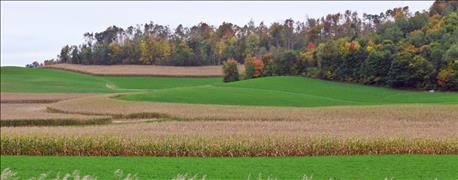Explore our blog featuring articles about farming and irrigation tips and tricks!
Stewardship Of The Soil

By: Mike Travis
Stewardship is defined by Merriam-Webster as the “careful and responsible management of something entrusted to one’s care.” As farmers and agriculturalists, we are directly entrusted with the care of the soil. How we handle this responsibility and privilege is of paramount importance not only to the current generation, but also to the generations that will follow.
It is easy to get caught up in the daily and seasonal stresses that plague us as humans, and particularly as farmers, in the 21st century. Nevertheless, it is often necessary to set the pressures aside long enough to refocus and determine what we do and why we do what we do. At the end of our career, at the culmination of our “40 chances,” as Howard G. Buffett put it, how will we know if we were successful? The land we pass on to the next generation will define our legacy as soil stewards.
The nature of soil
The Greek agriculturalist Xenophon said more than 2,000 years ago, “To be a successful farmer, one must first know the nature of the soil.” And while it may seem like a simple concept for those of us who make our living from agriculture, the complexity of soil continues to grow.
We understand soil on various levels. Our default understanding is that soil is the medium in which we grow our crops. This working definition often views soil as a black box — we prepare the soil, plant our seeds, add fertilizer, manage weeds, hope for rain and anticipate a good harvest.
Stay up to date on all T-L news and get alerts on special pricing!


